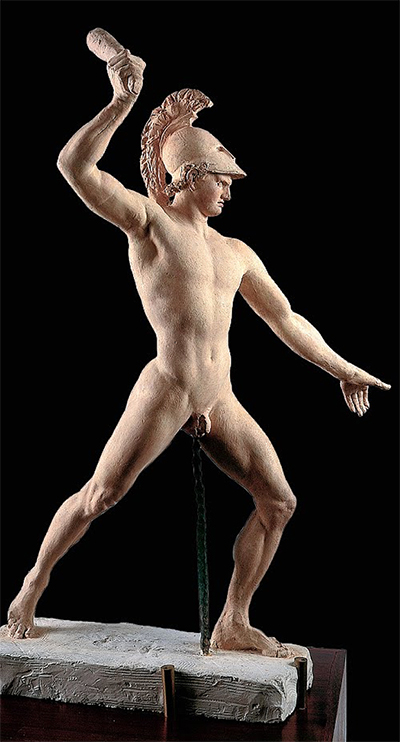Theseus is a statue made of marble, in Rome, in the year 1782. In the sculpture, the Greek legendary hero Theseus is sitting on a minotaur that he had killed. Coils of threads that will be used by Theseus to retrace his steps are visible from the minotaur's left leg.
This is a series from the many stories of Ovid's Metamorphoses. The overall theme of the sculpture is not the struggle that Theseus underwent in killing the minotaur but rather that of Victory as seen in the brooding pose, sitting on the defeated enemy. This was important in showing the melancholy, ruminative moment after the deed was more in respect to the new perception of the art rather than the traditional scene of the dramatic struggle with the Cretan monster. In Theseus, the legend is seen reflective and composed despite the violent struggle that has just taken place. His body reflects a chiseled ideal of perfection. The sculpture proved a great success and helped to build his reputation.
Theseus is a Greek, ancient and smooth in texture sculptor, crafted out of marble. It is a mid-size sculpture almost the size of a standard table placed standing vertically. Theseus tone is that of calmness which comes from victory and relaxation from a long battle. He was influenced into the art of sculptors by his paternal grandfather Pasino Canova, who was a stone man himself, and owner of a quarry. His sculptures were inspired by Baroque and classical revival style. He was also an apprentice to Giuseppe Bernardi and also under the tutelage of Giovanni Ferrari. Canova inspired a lot of people but most notably, his apprentices. He did not work with students oftenly, but instead hired workers who would curve initial figures from marble.
His elaborate system of comparative pointing and his workers were able to reproduce plaster form in the block of marble. It is also noted that Canova spent a large amount of his fortune helping students and offering patrons to struggling sculptors such as Richard Westmacott and John Gibson. Also, some of Canova's work (The Dancing Girl and Hebe) appear as engravings in Fisher's drawing-room scrapbook, 1834. His other works include Tomb of Clement XIII, Mommnet to Pius VI, Venus Victrix, The Three Graces, Perseus Triumphant ( 1804 to 1806), Napoleon as mars the Pacemaker (1802 to 1806), Psyche Revived by Cupid's Kiss (1787).




